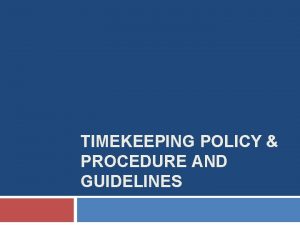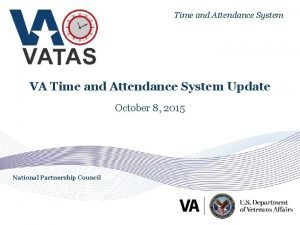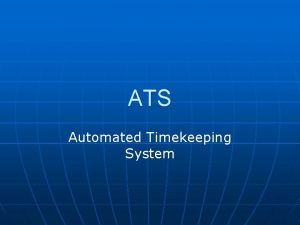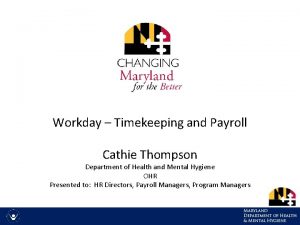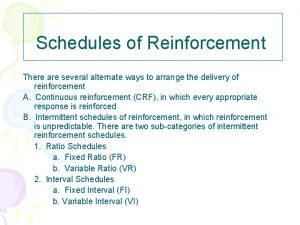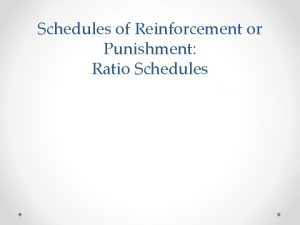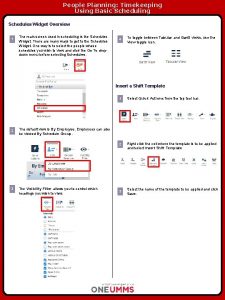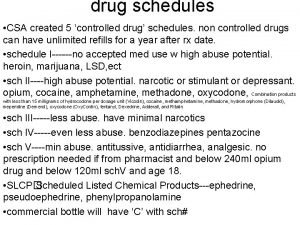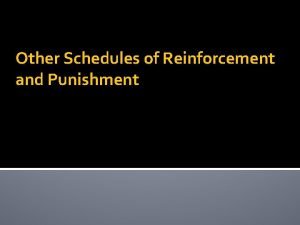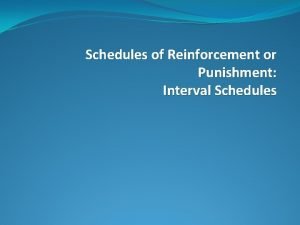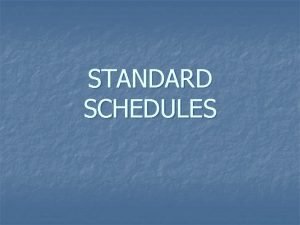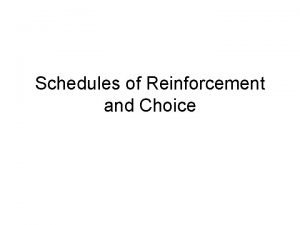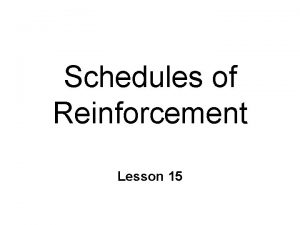Alternative Work Week Schedules Timekeeping at the CPUC















- Slides: 15

Alternative Work Week Schedules Timekeeping at the CPUC

Introduction § The alternative work week schedule allows employees and supervisors to mutually agree upon a varied distribution of their normal work hours. § It does not change the number of hours worked, but simply allows each individual the flexibility to rearrange their work schedule to better meet their personal needs while considering the needs of the office. 2

Alternative Work Week Agreement § This agreement will be made between the employee and their supervisor. The employee will complete the Alternative Workweek Schedule Agreement (pictured on the right) and have it approved and signed by the employee’s supervisor and branch chief. The employee will then turn the agreement to their Personnel Specialist. § Upon approval from Human Resources, the Personnel Specialist will notify the timekeeper about the employee’s new work schedule and provide any other pertinent information. 3

Eligibility Requirements § Must be a permanent, full-time employee with at least 6 months tenure. § Must have a combination of 40 hours of vacation, sick, annual leave, personal leave, CTO, or personal holiday credits before beginning. § All participants must have a minimum sick leave balance of 20 hours. § These balances must be maintained throughout the duration the employee’s participation of the program to avoid any DOCK situation. 4

Types of Alternative Work Week Schedules § 9/8/80: An employee works eight 9 -hour days and one 8 hour day in a two-week period with one day off every other week that corresponds with the 8 -hour day. § 4/10/40: An employee works the required 40 -hour minimum work week in four 10 -hour days between Monday and Friday. 5

9/8/80 Schedule SUN MON TUE WED THU FRI SAT 1 8 hr 2 9 hr 3 9 hr 4 9 hr 5 9 hr 6 7 8 OFF 9 9 hr 10 9 hr 11 9 hr 12 9 hr 13 14 15 8 hr 16 9 hr 17 9 hr 18 9 hr 19 9 hr 20 21 22 OFF 23 9 hr 24 9 hr 25 9 hr 26 9 hr 27 28 29 8 hr 30 9 hr 31 9 hr Example: An employee works 9 -hour shifts with one 8 -hour day alternating as their day off. 6

4/10/40 Schedule SUN MON TUE WED THU FRI SAT 1 OFF 2 10 hr 3 10 hr 4 10 hr 5 10 hr 6 7 8 OFF 9 10 hr 10 10 hr 11 10 hr 12 10 hr 13 14 15 OFF 16 10 hr 17 10 hr 18 10 hr 19 10 hr 20 21 22 OFF 23 10 hr 24 10 hr 25 10 hr 26 10 hr 27 28 29 OFF 30 10 hr 31 10 hr Example: An employee works 10 -hour shifts with day off per week. 7

Excess/Deficit Hours § Employees must account for all required work hours during each pay period to receive a full paycheck. § Pay periods often begin and end in the middle of a workweek. When this occurs, there will be a difference between the hours actually worked and the hours required in order to receive a full paycheck. § Hours worked over the required number are called excess hours, while hours worked below the required number are called deficit hours. 8

Excess Hours § Excess Hours – will be carried to the employee’s excess credit bank up to a maximum of 40 hours. These will be used to offset deficit hours. In the event an employee has over 40 hours of excess credit, they must use these hours before they use holiday credits, vacation, annual leave, personal holiday, or CTO. § If an employee separates or transfers to another department, the excess hours will be compensated as pay at straight time. Excess time cannot be transferred with the employee if they transfer to another department. 9

Deficit Hours § Deficit Hours – will not be carried from month to month. Excess hours will be used to make-up for the deficit hours. If there is an insufficient balance of excess hours, holiday credit, vacation, annual leave, personal leave, CTO, or personal holiday credits must be used. An employee may not use any other leave credit in lieu of excess hours. § Sick leave may not be used to make up deficit hours. 10

Frequently Asked Questions Q: If there is a paid holiday on an employee’s scheduled work day, do the employee get paid for 9 hours (if on a 9/8/80) or 10 hours (if on a 4/10/40)? A: The employee will only receive 8 hours for the paid holiday. The extra 1 hour (if on a 9/8/80) or 2 hour (if on a 4/10/40) will come out of the employees excess hours accrued. If there is an insufficient balance of excess hours, the extra time will come out of an employee’s leave balance. (i. e. , vacation, CTO, personal leave, etc. ) 11

Frequently Asked Questions Q: What if an employee’s scheduled day off falls on a paid holiday? A: If a holiday falls on a regularly assigned day off, the employee will be credited with eight hours of excess time. 12

Frequently Asked Questions Q: What happens if an employee needs to come in on their day off because of a work requirement such as a meeting? A: The employee needs to have a discussion with their supervisor about an alternative day to take off that week to make up for the day he/she is coming into work. The timekeeper, however, will enter the employee’s time in HRIS as it is normally scheduled. 13

Frequently Asked Questions Q: What if the employee has deficit hours for the month and has no excess hours or other proper leave credits to use? A: This should never happen because employees must maintain a balance of at least 40 hours of vacation, sick, annual leave, personal leave, CTO, or personal holiday credits while on an alternative work schedule. However, if this were to happen, the employee would be DOCK for the deficit hours. 14

End of Tutorial Timekeeping at the CPUC
 Cpuc elcc
Cpuc elcc Esj action plan
Esj action plan Cpuc der action plan
Cpuc der action plan Week by week plans for documenting children's development
Week by week plans for documenting children's development Sample timekeeping policy and procedures
Sample timekeeping policy and procedures Electronic timekeeping
Electronic timekeeping Va time and attendance policy
Va time and attendance policy Amta timekeeping
Amta timekeeping Automated timekeeping system
Automated timekeeping system Workday timekeeping system
Workday timekeeping system Amta timekeeping
Amta timekeeping Electronic timekeeping
Electronic timekeeping Manusonic timekeeping
Manusonic timekeeping Acquiring experience
Acquiring experience Operant vs. classical conditioning
Operant vs. classical conditioning Dense schedule of reinforcement
Dense schedule of reinforcement




